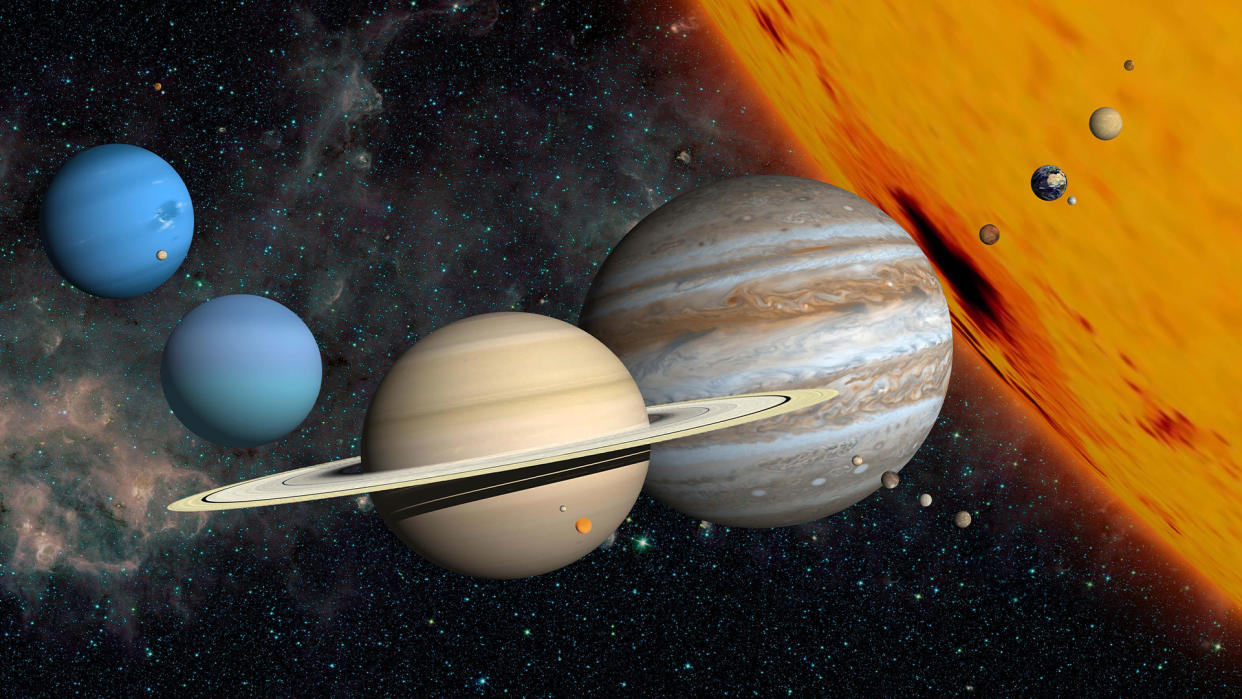No, a 'planetary parade' will not be visible from Earth on June 3. Here's what you can really see.

Six of the planets in our solar system — Mercury, Mars, Jupiter, Saturn, Uranus and Neptune — are about to align on June 3 in what some media outlets are dubbing a "planetary parade."
But, despite a flurry of breathless coverage promising otherwise, you won't be able to see most of them as they rise before dawn.
That's because at least four of the planets on display (Mercury, Jupiter, Uranus and Neptune) will either be too dim to see with the naked eye or masked by the glare of the rising sun, skywatching journalist Jamie Carter wrote for Forbes.
The remaining planets — Mars and Saturn — will be visible, though they will likely be quite dim in the predawn hours, when the alignment is predicted to occur, Carter added. Mars and Saturn have actually been visible just before dawn all month long, rising steadily higher each morning in May, Earthsky.com notes.
Related: Have all 8 planets ever aligned?
All of this means that you may not want to get up at the crack of dawn to see the disappointing planetary parade. But if you remain unperturbed, the sight will be best visible an hour before sunrise on June 3 and June 4.
RELATED STORIES
—A 'captured' alien planet may be hiding at the edge of our solar system — and it's not 'Planet X'
—What would colors look like on other planets?
—Could scientists stop a 'planet killer' asteroid from hitting Earth?
For those who do sacrifice their sleep to catch a glimpse of the alignment, you won’t be entirely let down. That's because on the nights in question, a beautiful crescent moon will be visible near Mars and Saturn, Carter notes. A pair of stargazing binoculars or a good small telescope can help enhance the view of both the planets and our moon.
If you're curious about this alignment, or other upcoming ones, Time and Date and Stellarium are two great online tools for finding viewing dates and times based on where you are in the world, and will even show you the locations of the four hidden planets on June 3. On mobile phones, the Sky Tonight is a free app that will do the same job.
Happy planet-watching — but don't say we didn't warn you!
